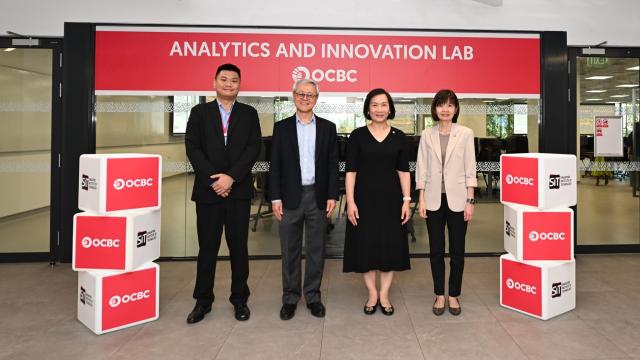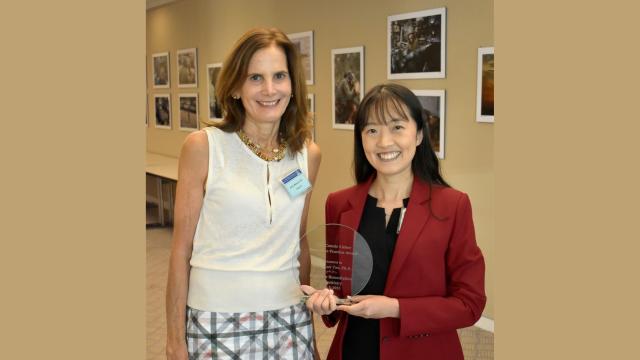The Singapore Institute of Technology will be rolling out the re-designed three-year Bachelor of Engineering with Honours in Naval Architecture and Marine Engineering in Academic Year 2022. Jointly offered by SIT and Newcastle University, the degree programme will commence in September 2022.

The Earth is made up of 70% water, so our oceans are essential for our livelihood. Container ships deliver life-saving vaccines and essential cargo. Fishing vessels ensure our food supply. Military vessels secure peace and stability. Offshore energy-producing facilities provide clean energy. In short, the maritime industry is critical to our way of life, and is a huge global employer in both developed and developing countries.
Across the world today, around 90% of traded goods are carried over the seas. However, as the world becomes more eco-conscious, we also need to rethink the kinds of vessels that ply our oceans.
As the world’s top maritime centre, Singapore is in a unique position to contribute towards advancing the efforts of the international maritime community to promote efficient and sustainable shipping.
To tackle the fast-changing requirements of the maritime industry, the Singapore Institute of Technology (SIT) will be rolling out the re-designed three-year Bachelor of Engineering with Honours in Naval Architecture and Marine Engineering (NAME) programme – a joint degree offered by SIT and Newcastle University.
Be the change in the maritime industry
The NAME degree is a redesigned course which is a combination of both universities’ existing Marine Engineering, Naval Architecture and Offshore Engineering programmes. You will be able to select your specialisation towards the end of Year 1 instead of upon matriculation, giving you more time to explore your interest. By the time you reach the upper years of your degree, you can choose to specialise in Naval Architecture, Marine Engineering, or Offshore Engineering.
Naval architects, marine engineers and offshore engineers work with ships and allied structures, creating vessels that range from cruise ships, navy ships, and mega yachts, to floating wind turbines and offshore platforms.

As a naval architect, your knowledge of art and science enables you to harness renewable energy in designing new eco vessels, building all-electric ferries and fishing vessels, decarbonising ocean liners, and more. While as a marine engineer, you have the expertise to design the inner working systems that bring these vessels to life. And as an offshore engineer, you will have the knowledge to design offshore wind farms, sub-stations, and floating solar farms. Together, naval architects, marine engineers, and offshore engineers work as a team to put the pieces together.
Since naval architects are involved in designing the vessels, the job scope often involves conceptual design to meet client requirements, and teaming up with marine engineers to define the vessel’s technical specifications. Marine engineers are also needed to carry out preventive maintenance, upgrades and repairs, and may be employed both onshore as well as offshore, depending on their precise roles and locations.
In addition to a career with the Maritime Port Authority, you can look forward to occupations in a wide range of maritime industries, including shipbuilding and rig building yards, shipping and ship management companies, oil and gas companies, classification societies that regulate the maritime industry, as well as the Republic of Singapore Navy.
A redesigned course for greater employability
By the first year of the NAME programme, you will have gone through both Naval Architecture and Marine Engineering modules so that you have more time to discover your interests and strengths. The course addresses emerging areas in the maritime industry, where you will gain the expertise and skills to drive maritime digitalisation, offshore wind and renewables, decarbonisation, as well as sustainable design and engineering of the global marine and offshore industry.

The programme will also introduce interdisciplinary and transferable skills, including Digital Competency, Critical Thinking and Communication, as well as Design Innovation. These modules enable you to work with students from other academic clusters and programmes, helping you hone your skills at conceptualising solutions for complex, interdisciplinary problems.
In addition, all SIT students also complete a Social Innovation Project with community partners to work on meaningful work projects and achieve impactful solutions for challenging issues, helping you further develop the kinds of interdisciplinary skills which are critical to boosting your employability.
Another feature designed to boost employability is SIT’s unique Integrated Work Study Programme (IWSP), which allows you to integrate theory and practice as you develop deep specialist skills in your chosen field with an industry partner. With the new NAME programme extending the existing IWSP to eight months (from the current six months), it gives you greater exposure and in-depth learning with participating IWSP companies.
As this degree is a joint programme with Newcastle University, you will also participate in a three-week Overseas Immersion Programme in the United Kingdom. By the time you graduate, you will have accumulated both valuable work experience and picked up highly transferable soft skills, putting you in an enviable position for employability.
For a sustainable future of the sea
In order to achieve the International Maritime Organisation’s target of a 70% reduction in carbon intensity and 50% reduction in overall CO2 levels by 2050, ‘zero carbon’ vessels will need to start entering service by 2025. This means that the design of such vessels – which is no easy task – should start now.
This is why now is a good time to claim your place in this booming maritime industry, by enrolling in the Bachelor of Engineering with Honours in Naval Architecture and Marine Engineering (NAME) programme. This three-year direct honours programme starts in September 2022.
Applications for admission to SIT close on 19 March 2022. Visit https://www.singaporetech.edu.sg/admissions to find out more.
– – –
This article first appeared on Campus Magazine.
![[FA] SIT One SITizen Alumni Initiative_Web banner_1244px x 688px.jpg](/sites/default/files/2024-12/%5BFA%5D%20%20SIT%20One%20SITizen%20Alumni%20Initiative_Web%20banner_1244px%20x%20688px.jpg)


